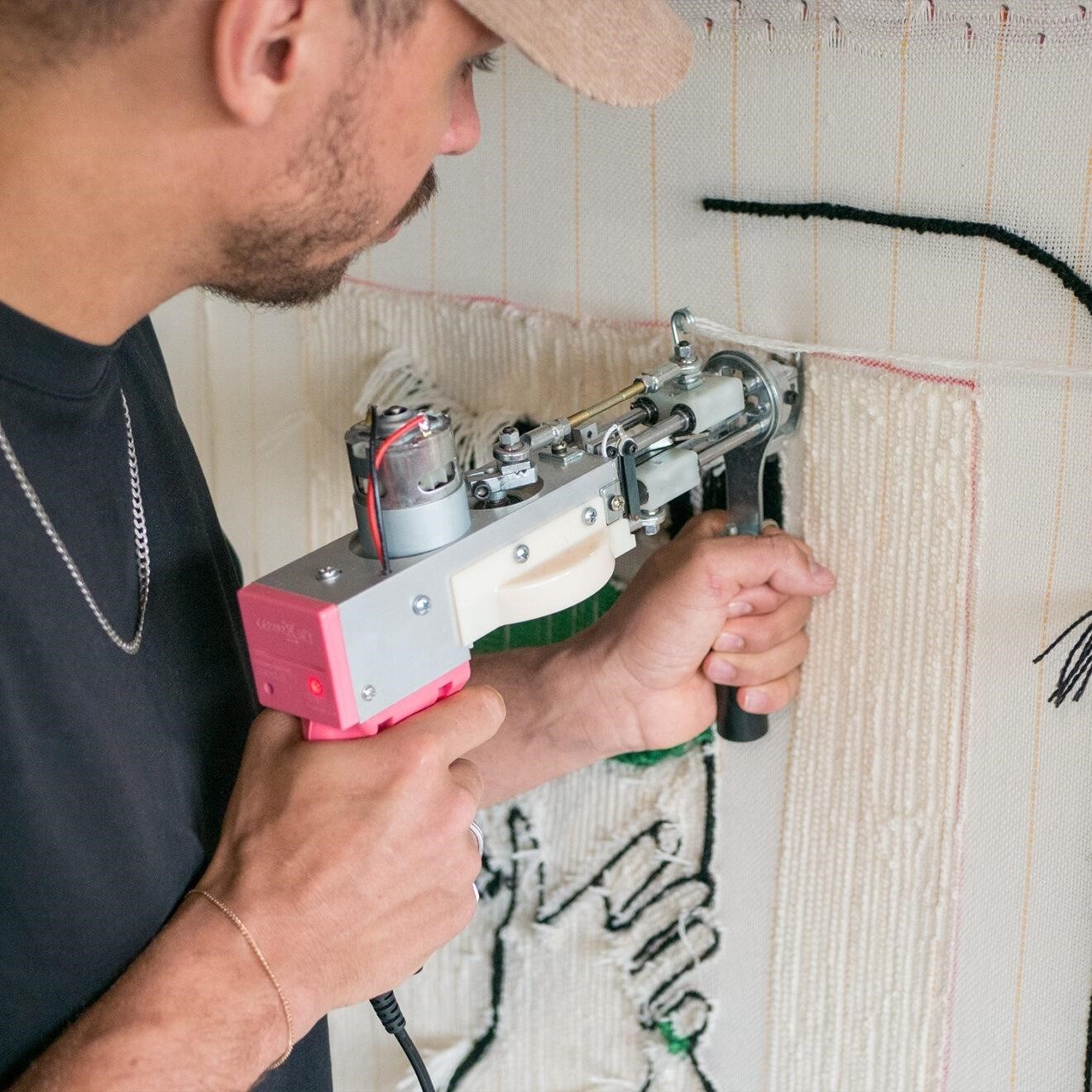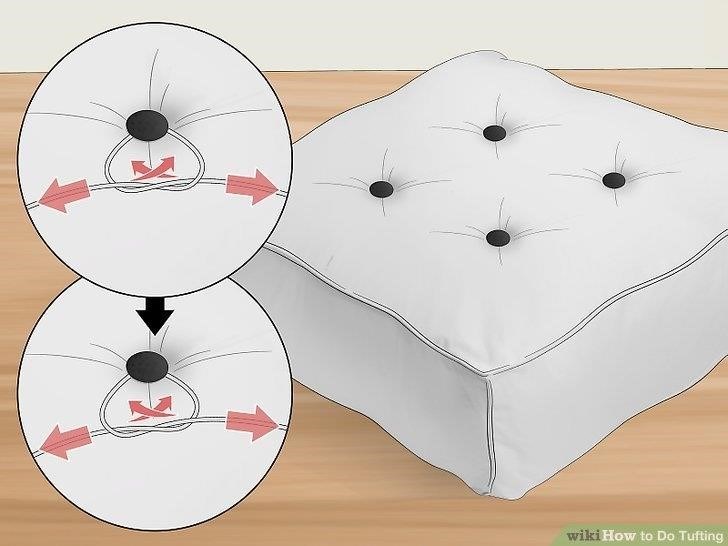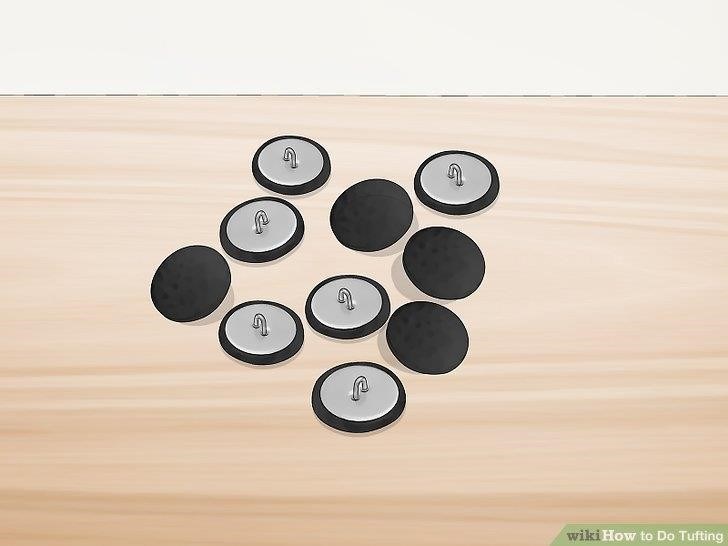Tufting Gun Manuals⁚ A Comprehensive Guide
This guide explores the world of tufting gun manuals‚ offering a comprehensive resource for both beginners and experienced users. Discover various manual types‚ from PDF downloads to online video tutorials‚ ensuring you find the perfect resource for your tufting journey. Learn essential safety precautions and maintenance tips for optimal performance.
Choosing Your Tufting Method
Selecting the right tufting method is crucial for your project’s success. The primary choice lies between loop pile and cut pile techniques. Loop pile creates a textured‚ plush surface with consistent loops of yarn‚ ideal for rugs with a soft‚ durable feel. Cut pile‚ on the other hand‚ offers a more varied texture with cut yarn ends‚ resulting in a shaggier‚ potentially more luxurious look. Many tufting guns cater to both methods‚ offering versatility. Consider the desired final aesthetic and the technical skills required for each. Online tutorials and manuals often showcase the nuances of each method‚ providing visual demonstrations and step-by-step instructions. Your choice dictates the type of tufting gun needed and the overall approach to your rug-making process. Carefully weigh the pros and cons of each approach before making your decision‚ ensuring your chosen method aligns with your skill level and desired outcome. Remember to consult your specific tufting gun’s manual for detailed instructions relevant to your chosen method.
Selecting the Right Tufting Gun⁚ Electric vs. Pneumatic
The choice between an electric and a pneumatic tufting gun significantly impacts your tufting experience. Electric guns‚ ideal for home use‚ are generally quieter and easier to operate‚ requiring only an electrical outlet. Their portability and ease of use make them perfect for beginners. However‚ they typically offer lower pile height options‚ limiting design flexibility. Pneumatic guns‚ powered by an air compressor‚ provide greater power and versatility. They allow for higher pile heights and faster tufting speeds‚ beneficial for large projects or those requiring intricate details. The increased power comes at the cost of added noise and the need for an external air compressor. Consider your budget‚ project scale‚ and desired pile height when making your selection. Consult online manuals and reviews to compare specific models within each category‚ noting features like speed control‚ needle adjustments‚ and ease of maintenance. The right choice ensures efficiency and enjoyment throughout your tufting process.
Understanding Tufting Gun Components and Setup
Familiarizing yourself with your tufting gun’s components is crucial for safe and efficient operation. Most guns comprise a motor (electric or pneumatic)‚ a drive mechanism‚ a needle assembly (including the needle itself and often a cutting mechanism for cut-pile)‚ a yarn guide‚ and a handle. Understanding how these parts interact is essential. Your tufting gun manual will detail the specific components of your model‚ but common elements include adjustments for pile height and stitch density. Setup typically involves attaching the gun to a backing fabric stretched on a frame. Before starting‚ carefully thread the yarn through the needle and yarn guide‚ ensuring correct tension. The manual will provide detailed instructions for threading‚ adjusting settings‚ and checking for proper functionality before beginning your project. Pay close attention to diagrams and illustrations to avoid misalignment or damage to the delicate parts of the tool. Proper setup is fundamental to achieving consistent results and preventing malfunctions.
Essential Safety Precautions for Tufting Gun Operation
Operating a tufting gun requires adherence to crucial safety measures. Always consult your specific tufting gun manual for detailed instructions and warnings. Before each use‚ inspect the gun for any damage to the cord‚ casing‚ or moving parts. Ensure the work area is well-lit and free of obstructions to prevent accidents. Never operate the gun near water or in damp conditions‚ as this poses an electrocution risk for electric models. Always wear safety glasses or goggles to protect your eyes from flying debris or yarn. Keep your fingers and hands clear of the needle and moving parts during operation. Electric tufting guns may overheat; allow for regular breaks to prevent motor damage. For pneumatic guns‚ ensure proper compressor maintenance and pressure regulation. If you encounter any malfunctions or unusual noise‚ immediately switch off the machine and consult your manual for troubleshooting guidance‚ or contact customer support. Never attempt repairs without proper training or expertise. Prioritize safety to prevent injuries and equipment damage.
Tufting Techniques⁚ Loop Pile vs. Cut Pile
Tufting offers two primary pile types⁚ loop pile and cut pile‚ each achieving distinct textural effects. Loop pile‚ created by leaving the yarn loops intact‚ results in a smooth‚ even surface ideal for rugs requiring durability and a consistent texture. The tufting gun’s settings are crucial for loop pile; consistent tension and even yarn feed are key to preventing snags or unevenness. Cut pile‚ conversely‚ involves cutting the yarn loops after tufting‚ generating a plusher‚ more luxurious feel. This technique offers greater design flexibility‚ allowing for varied pile heights and textural patterns. Achieving a clean cut requires sharp shears or a specialized rug carver. The choice between loop and cut pile depends on the desired aesthetic and functional properties of the finished rug. Many rug makers combine both techniques for a multi-textured effect. Your tufting gun manual will provide specific guidance on adjusting settings for each pile type‚ ensuring optimal results for your chosen design.
Working with Different Backing Materials
The choice of backing material significantly impacts the final rug’s durability‚ texture‚ and overall quality. Common options include primary tufting cloth‚ often preferred for its strength and even surface ideal for consistent pile height. The choice of primary tufting cloth often comes in various weights and colors. Burlap‚ a more readily available and cost-effective alternative‚ offers a rustic texture but may require additional preparation to ensure even yarn penetration and prevent fraying. When using burlap‚ pre-treating it with sizing can improve its stability and performance during the tufting process. Canvas offers a medium between burlap and tufting cloth in terms of cost and durability. The tufting gun manual may offer specific recommendations for each backing type regarding tension‚ needle penetration‚ and yarn selection. Understanding these factors helps achieve a professional finish and ensures the longevity of your handmade rug. Experimentation with different backing materials allows for creative exploration and varied results.
Maintaining Your Tufting Gun⁚ Cleaning and Oiling
Regular cleaning and lubrication are crucial for extending the lifespan of your tufting gun and ensuring optimal performance. After each use‚ remove any yarn scraps or debris from the needle and surrounding areas using a small brush or compressed air. Pay close attention to the areas where the needle enters and exits the gun head. Accumulated lint can hinder the machine’s smooth operation and potentially lead to jams or malfunctions. The tufting gun manual will likely detail recommended cleaning agents and procedures‚ emphasizing the importance of using appropriate lubricants. For electric guns‚ the manual may advise against using harsh chemicals that could damage the internal components. Consistent lubrication‚ usually with a high-quality sewing machine oil applied sparingly to moving parts‚ helps prevent friction and wear. Over-oiling can attract dust and lint‚ negating the benefits of lubrication‚ so follow the manufacturer’s instructions carefully. Periodically inspect the gun for any signs of damage or wear and consult the manual for guidance on troubleshooting or repair. Proper maintenance ensures your tufting gun runs smoothly for years to come.
Troubleshooting Common Tufting Gun Issues

Consulting your tufting gun manual is essential when troubleshooting problems. Common issues include inconsistent pile height‚ skipped stitches‚ or the gun jamming. Inconsistent pile height often stems from improper tension adjustment; refer to your manual’s instructions on adjusting the tension settings to achieve the desired results. Skipped stitches might indicate a problem with the needle‚ potentially requiring replacement. A clogged needle or a build-up of lint can cause the gun to jam. Thorough cleaning‚ as detailed in the maintenance section of your manual‚ should resolve this. If the gun overheats‚ ensure proper ventilation and check that the power supply is adequate. The manual may provide specific troubleshooting steps for overheating issues‚ including advice on cleaning the motor and ensuring sufficient lubrication. Electrical problems might require professional assistance‚ and the manual may provide contact information for customer support or repair services. Remember to always disconnect the power before undertaking any maintenance or repair work. By carefully following the troubleshooting guidance in your manual‚ many common problems can be quickly and effectively addressed‚ maximizing uptime and productivity.
Advanced Tufting Techniques and Design Considerations
Beyond basic tufting‚ explore advanced techniques detailed in specialized tufting gun manuals or online resources. Mastering pattern creation involves careful planning and execution. Consider using stencils or freehand drawing for intricate designs. Experiment with different yarn types and colors to achieve a variety of textures and visual effects. Advanced techniques include creating different pile heights within a single design‚ adding texture through varying stitch density‚ or incorporating multiple colors seamlessly. Learn about creating high-low pile effects for added dimension and visual interest. Understanding the limitations of your specific tufting gun is crucial; Some guns may be better suited for specific pile heights or yarn types. Explore techniques like fringe creation or adding embellishments post-tufting to enhance your rug’s aesthetic appeal. Experiment with incorporating different materials‚ such as beads or sequins‚ for unique textural elements. Advanced design considerations include scaling patterns effectively for larger rugs and planning the yarn usage to avoid mid-project shortages. Refer to online tutorials and experienced tufters’ work for inspiration and guidance as you push the boundaries of your creative abilities.
Where to Find Tufting Gun Manuals and Resources

Locating comprehensive tufting gun manuals requires a multifaceted approach. Manufacturer websites often provide downloadable PDFs or links to online tutorials specific to their models. These manuals frequently cover setup‚ operation‚ maintenance‚ and troubleshooting. Online marketplaces like Etsy and Amazon may offer third-party guides or instructional booklets alongside tufting gun sales. Always verify the seller’s reputation and the manual’s relevance to your specific equipment. Independent blogs and websites dedicated to rug making and tufting offer valuable insights and tips. These resources may include detailed articles‚ video demonstrations‚ and community forums where you can ask questions and share experiences. YouTube channels are a treasure trove of visual learning. Many experienced tufters create comprehensive video tutorials covering various techniques‚ from basic setup to advanced design considerations. Remember to cross-reference information from multiple sources to gain a holistic understanding. Searching for specific terms like “tufting gun manual PDF‚” “electric tufting gun instructions‚” or “loop pile tufting tutorial” will yield relevant results. Participating in online communities focused on rug making can help you connect with fellow enthusiasts‚ access shared resources‚ and get assistance when needed. This collaborative approach significantly enriches the learning process.
Online Courses and Tutorials for Tufting
The digital landscape offers a wealth of online resources to enhance your tufting skills. Platforms like Skillshare‚ Udemy‚ and Coursera host comprehensive courses taught by experienced tufters. These courses often cover various aspects of tufting‚ from selecting the right equipment and materials to mastering advanced techniques. Video tutorials on YouTube provide a convenient and accessible learning method. Many channels offer step-by-step guides on topics such as setting up your tufting gun‚ threading yarn‚ creating different pile types (loop and cut)‚ and finishing your rugs. Interactive online communities and forums dedicated to rug making and tufting provide a platform for learning from experienced practitioners. You can ask questions‚ share your projects‚ and receive valuable feedback from a supportive community. Some manufacturers offer online tutorials specific to their tufting gun models. These tutorials often provide detailed instructions on using their equipment effectively and troubleshooting common issues. Remember to seek out courses and tutorials that align with your skill level and specific tufting goals‚ whether you’re a beginner or an advanced crafter. Supplementing your learning with online resources helps create a well-rounded understanding‚ fostering continuous improvement in your tufting journey. Consider exploring paid courses for structured learning‚ or utilize free YouTube tutorials and forums for supplementing your knowledge.
